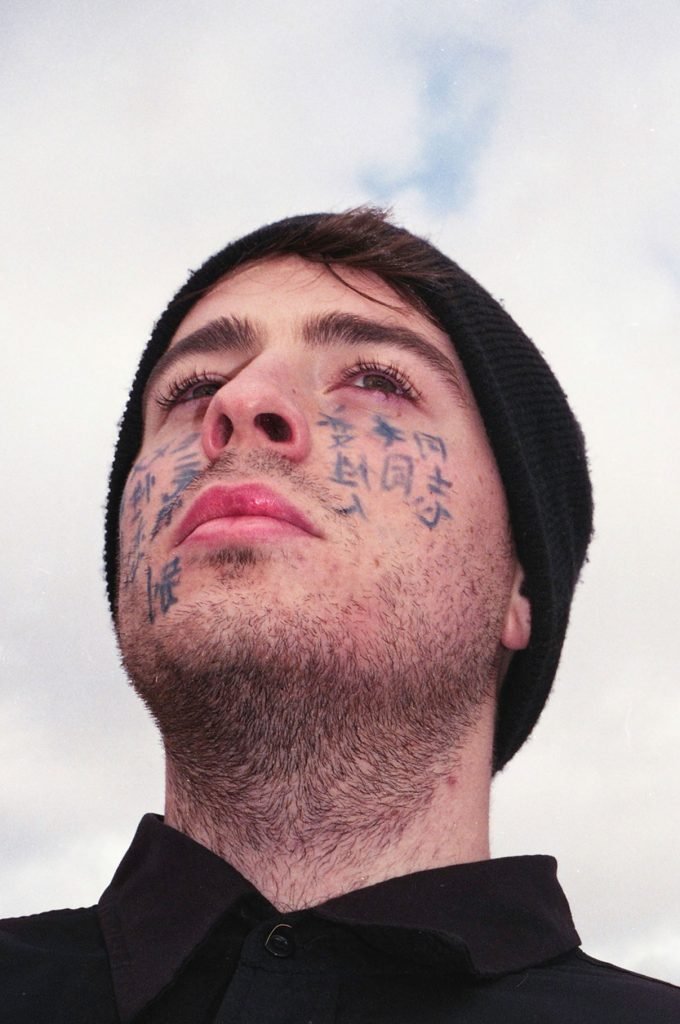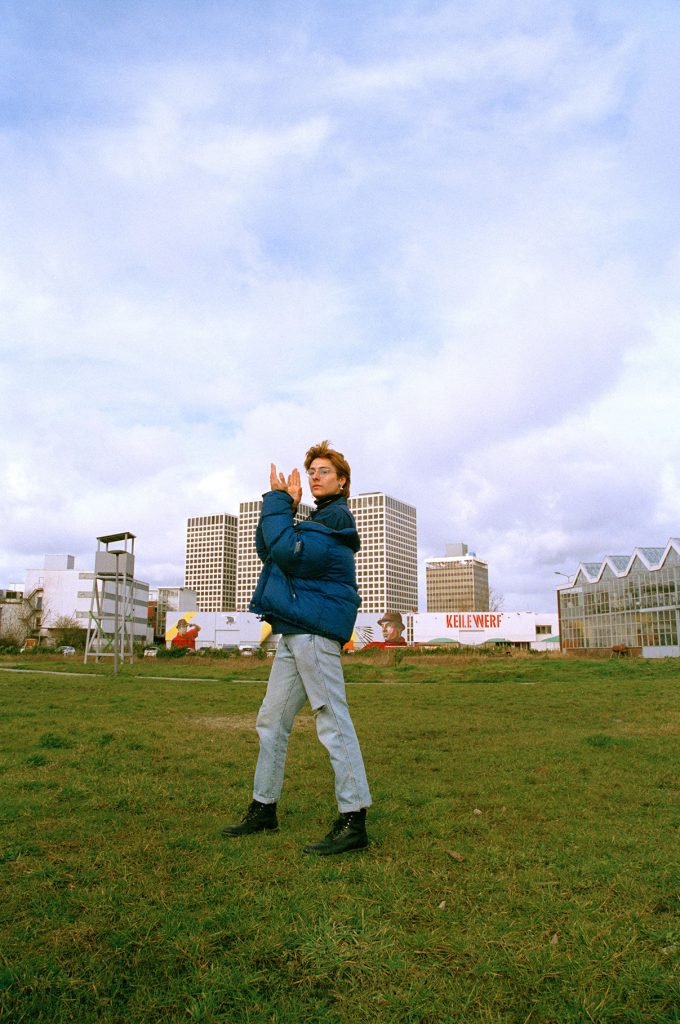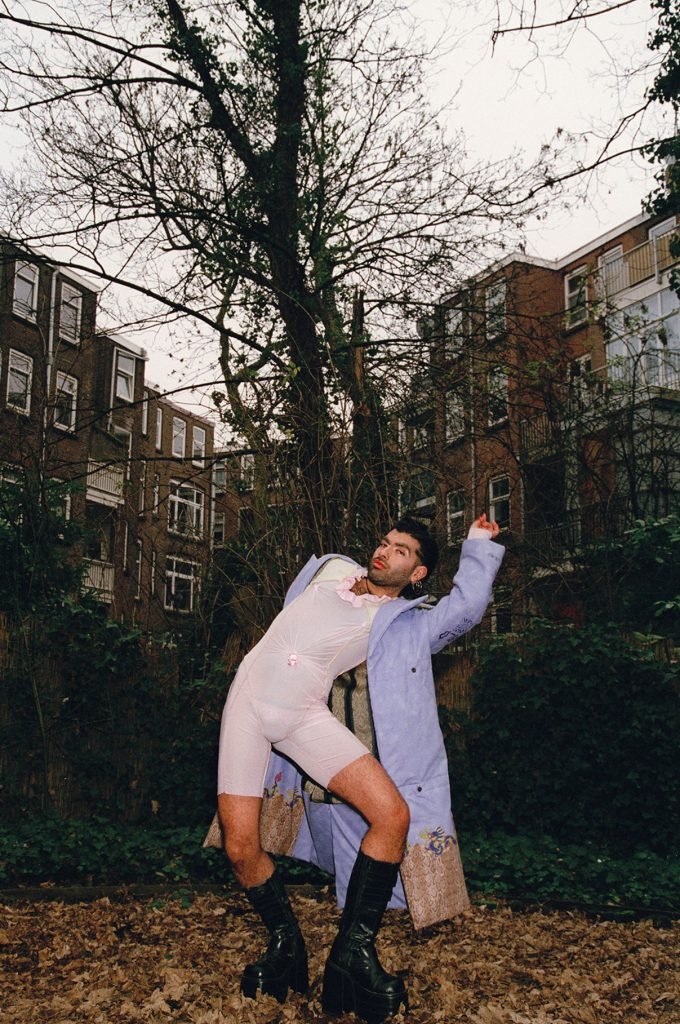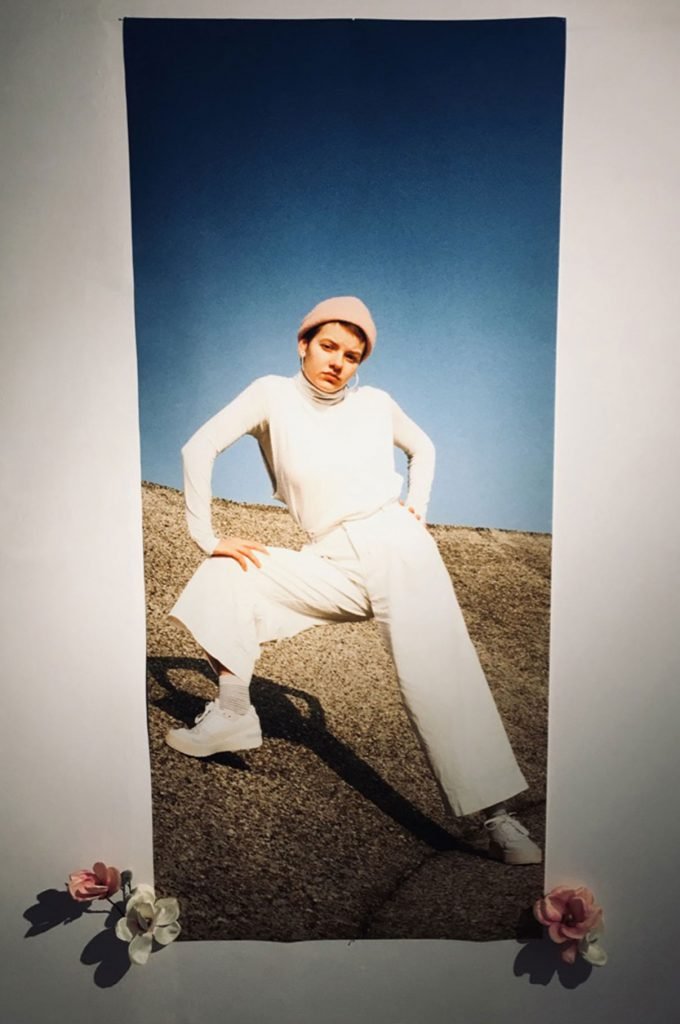After a recent exhibition featuring different emerging artists, RAW Streetphoto Gallery opened its latest season on Saturday the 14 March with a solo exhibition by the Italian Photographer, Alice Lucchinelli. The exhibition is titled DANCE QUEERDO DANCE, and it intends to build a podium that celebrates the queerness and weirdness of all the different creatures that live around us. Lucchinelli, thus, created a version of reality that should intrude in the minds of the visitors to question all the securities and misconceptions imposed by the heteronormative society. Lucchinelli encapsulated the identity of six different individuals, members of the Queer community. Their transcendental beauty are shown through photographs and videos, which are unfold the unrestricted and glorious freedom that movement delivers in the heat of the performance. Looking forward to understanding new realms of the art world and the queer culture the team of RAW Streetphoto Gallery has prepared an interview with Lucchinelli.
RAW: Your work is closely focused on queerness, femininity and cultural identity. How did you find interest in these topics?
Alice Lucchinelli: For obvious heteronormative reasons, I was born as a woman: gender was handed down to me, along with a stereotypical definition of femininity. I changed this definition over the years, discovering its reaches and possibilities, by using my own body and personality as tools. They lead me to build a definition of femininity that is the complete opposite of what I received at the beginning of my life, and queerness has now become a substantial pillar of my artistic practice. This first surfaced while growing up in Italy, where the conservative environment had a restrictive impact on the development of my identity and the identity of my friends. We were all outcasts because of how we all expressed differently, and this restriction lead me to look for the ventures of my artistic expression elsewhere, the reason behind the fact that I have been living abroad for eight years now. The nomadic nature of the research process to find my cultural identity has always had the advantage to make me feel at home wherever I would find myself. At this stage, I can see how my identity was shaped by all the different places I visited and the variety of people I met over the years, building an intercultural canvas around an Italian core.
RAW: Before we dive too much into your most recent work, I would like to ask you about your past. You were born in Italy, do you think that your background shaped the way you see art?
AL: Without a doubt, my background has heavily influenced and shaped the beginnings of my art career: being born in Viareggio (a small town on the coast of Tuscany) means being constantly and abundantly surrounded by beauty. Many people find this beauty to be superficial -mere aesthetics- but I find that true beauty tells stories and mysteries of the past, which are still presently relevant to humankind in a universal manner. I carry the worth of this kind of beauty that Italy taught me both in my life and practice, and as a result, I always feel near my home country.
RAW: You have mentioned that you want your art to have an impact on your viewers. In more explicit words, you want your art to make your viewers feel empowered and free from taboos. I was wondering if this is the impact you want to generate in your viewers, what is the impact your art generates in you?
AL: Tricky question. Personally, I feel that the process of creating art is comparable to a journey into the realm of the unknown: at first, there is the seductive feeling of falling into something alien and different, like a plunge taken blindly into the darkness. This primordial call of void conveys an enthusiasm that cannot be instilled or forced: the artistic drive has to come from within the mind of the artist and become material once it leaves the realm of thought. For me, this drive is inspired by the people that surround me: wonderful individuals that I want to represent through the lens of my camera and show to the rest of the world. Representation is a crucial aspect in my own practice and -more broadly speaking- I consider it an essential quality in the art and artists that inspire me and that I appreciate. So, to wrap up the answer: the impact that art generates in me can be described as a never-ending journey exploring and experiencing the sublime, in whichever form or place it may show itself.
RAW: Your exhibition, “DANCE QUEERDO DANCE”, was developed in the metropolitan city of Rotterdam, The Netherlands. This city is quite particular, 45 percent of their residents are foreign born (World Population Review, 2020). I was wondering how this multicultural convergence point influenced the way you nurture your art?
AL: The wonderful multicultural tapestry of the city is the main reason why I love Rotterdam so much. Since I moved here, I started to widen my definition of what an individual is and what it could become. This broad spectrum that now stands before my eyes is the result of the space that the city offers to experiment and experience new and daring things. You actively perceive the sheer freedom to build your own identity in the manner you prefer and feel more comfortable, without having to worry about stupid canons or judgmental stares on your back. There is space for everybody, and anybody is welcome, here.
This has, of course, influenced my artistic practice in the last few years and I can safely say that Dance Queerdo Dance is the result of the “identity freedom” concept that I have been developing and researching. My models -who are firstly my friends and peers- come from different backgrounds and cultures, and in the space of the exhibition, I give them all the freedom of movement to shine brighter than ever and express themselves fully.
RAW: The 21st century has seen various rapidly growing social reforms that support the inclusivity of various minorities. The topics that your art stands for- queerness, femininity and cultural identity- have become popular topics for many artists. How do you respond to the rapidly growing competitiveness in the art sector?
AL: I believe that as humbled human beings firstly and as artists secondly, we especially matter and make a difference within the circle of our community. It is both a privilege and a duty to make ourselves be heard: each one of us brings a different approach, a distinct point of view to the table; but each and every single one is valuable and precious because they tell unheard aspects over the reality of the same community. So, from an outer perspective, it might seem that we are stepping over each other’s toes while exploring the same subject, instead we all talk about different shades over the wide spectrum of identity representation.
Especially in the case of photography – where you have a major visual component- subjects, settings, backgrounds and situations all come together to form a scenario which is unique and unrepeatable. And the audience will feel this, still interested every time to listen to the stories all these individuals have to tell.









